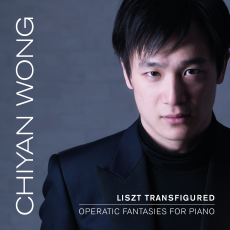Chiyan Wong - Liszt Transfigured - Gramophone
Nowadays two distinct approaches to the music of Liszt prevail among pianists. One group views the published scores as more or less sacrosanct, treating them with the same fidelity they would scores by Chopin or Schumann. The other sees Liszt's published texts as the basis for further embellishment, elaboration and occasionally recomposition. Justification for this approach often cites Liszt's lifelong penchant for revision, the many variants he gave his pupils in the late Weimar masterclasses, and recordings by some of his pupils and others of their generation who opted for a more personal statement in Liszt's music over adherence to the text.
The Hong Kong-born pianist Chiyan Wong is avowedly an advocate of the second approach, as evidenced in his new release of four Liszt opera fantasies, entitled ‘Liszt Transfigured'. Beyond the dazzling technical polish he brings to these fiendishly challenging pieces, most striking is Wong's sincerity of purpose. Fortunately, his reverence for Liszt precludes any radical alteration of the scores in the name of pianistic exhibitionism.
The Niobe Fantasy, Liszt's vehicle in the 1837 duel with Sigismond Thalberg at Princess Belgiojoso's Paris benefit, is more talked about than actually heard. The earliest recording I'm aware of is Steven Mayer's (ASV, 12/92) and it naturally figures in Leslie Howard's traversal of all Liszt's piano music (Hyperion). Wong's performance deserves an unapologetic place beside them. The Larghetto is beautifully wrought with fioritura passages that are especially lovely. There is an interpolated cadenza in the Allegro molto appassionato but by and large embellishments throughout are tasteful and unobtrusive.
In the fierce Fantasy on Halévy's La Juive, another seldom-heard work, there are a few cuts, an extended accompaniment passage is altered from legato to staccato, and there is an interpolated cadenza. The second variation on the Poloniase is deliciously dreamy and atmospheric. Wong captures the passionate fire of this piece with great élan, preserving its shape and textures with plenty of contrasts.
Linn has captured the spectrum of Wong's sound in all its dimensions. In a project that could have easily lapsed from ‘Liszt Transfigured' to ‘Liszt Disfigured', Wong presents this as yet another unfamiliar corner of the repertory with musicality bolstered by understanding and conviction. I suspect that, even for those who are not hard-boiled Lisztians, there will be a great deal of interest here. By all means, have a listen.

